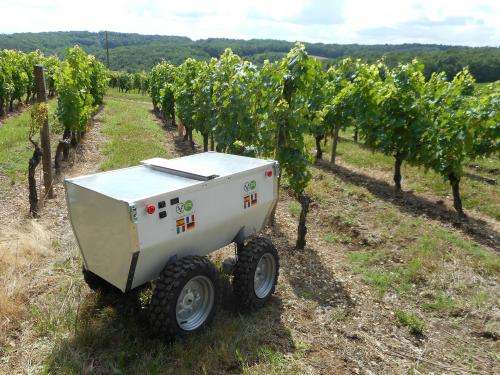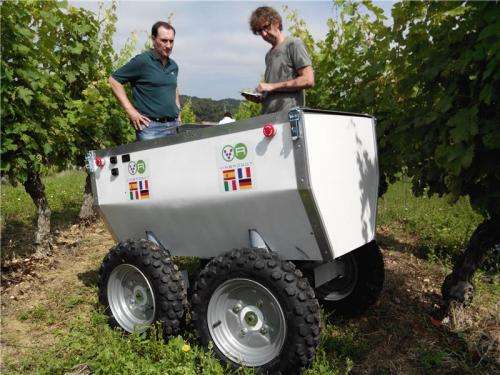A European research consortium comprising Spanish, French, Italian and German universities and companies is working on the development of an unmanned robot, equipped with non-invasive advanced sensors and artificial intelligence systems, which will help manage vineyards. This robot will provide reliable, fast and objective information on the state of the vineyards, such as vegetative development, water status, production and grape composition.
The robot is part of the European project VineRobot, whose partners met recently at the Universitat Politècnica de València (UPV). The project, in which the Agricultural Robotics Laboratory of the UPV is taking part, is led by the Universidad de La Rioja. Completing the consortium are the Spanish company Avanzare, the French FORCE-A and Wall-YE, and the Italian Sivis, together with Les Vignerons de Buzet, a wine cellar cooperative near Bordeaux; and the Hochschule Geisenheim University (Germany).
The major advantage of this project is the availability of a large quantity of automatically obtained data that any user will be able to interpret easily, since it is represented on simple maps; it will also allow the wireless transmission of information.
"Robotics and precision agriculture provide producers with powerful tools in order to improve the competitiveness of their farms. Robots like the one we are developing will not substitute the vine grower, but will facilitate their work, so they can avoid the hardest jobs in field. It has several advantages including the ability to predict grape production or its degree of ripeness in order to immediately assess its quality without touching it," says project researcher Javier Tardaguila.
In addition, a collateral positive collateral effect is the attractiveness of the application of new technologies in the field—robotics, precision agriculture and information technologies—for young farmers, as the high average age of farmers is a recurring matter of concern in industrialised countries.
First prototype
At the project meeting held at the UPV, the researchers presented the first robot prototype. The robot includes a basic safety circuit with many emergency switches and a bumper that stops the robot at any obstacle. The first working year has been focused on two projects: the robot's mobility in the field, improving the suspension and traction systems in order to climb up slopes with weeds; and the development and improvement of the different sensors that will be included in the robot.
The challenges for the next year are to give the robot the autonomy to safely drive between the vineyard lines using stereoscopic vision, integrating a side camera which will provide information about the vegetation status of the plants and possible bunches; and also the coupling of the sensors on the robot.
Provided by Asociacion RUVID
























